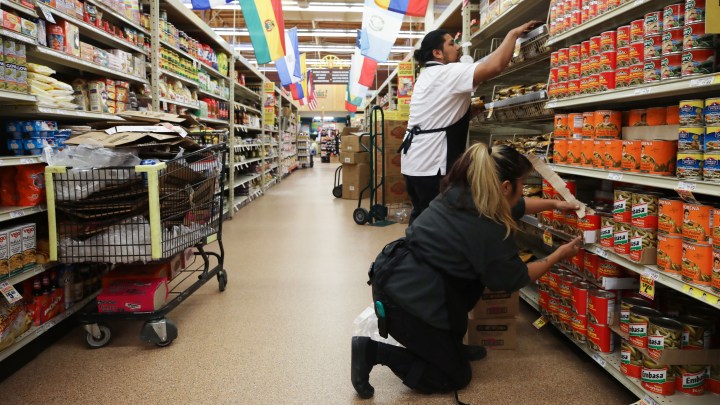
How companies disguise rising food prices

A little tip for your next grocery trip: “Beware of shrinkflation,” said Mark Bergen, a marketing professor at the University of Minnesota.
He was talking about one of the easiest things a manufacturer can do when the cost of making something goes up: Put a little less of it inside the package.
The company might also change the packaging itself, like offering a smaller tub of hummus that costs more per ounce, bundling ketchup and mustard together so shoppers think less about the itemized costs or redesigning the container to make the proportions just right.
“Because there’s nothing worse than having the same bag and you just reduce the chips. And you just look in there and you go, ‘What happened?'” Bergen said.
Retailers have tactics, too. But they don’t have a lot of control over the products themselves, so they have to be strategic about it.
“They don’t want to have sticker shock when someone goes into the supermarket. So what they do is, I don’t want to say they disguise price increases, but they try to lessen the burden,” said Phil Lempert, a food industry analyst who runs supermarketguru.com.
So stores will run fewer sales or increase prices and then put the items on sale. They’ll rearrange shelves to display cheaper generic brands.
Because, ultimately, “consumers really don’t remember what prices they paid for products,” Dartmouth College marketing professor Kusum Ailawadi said.
There are exceptions, like milk. Grocers might raise the price of half-and-half to make up for it.
“The more involved you are in the purchase of any product, the more you’re going to notice the price,” Ailawadi said.
This means consumers who want to save will have to put in the effort. Those who keep and compare receipts and are more flexible with the brands they buy will see a lower bill at checkout.
There’s a lot happening in the world. Through it all, Marketplace is here for you.
You rely on Marketplace to break down the world’s events and tell you how it affects you in a fact-based, approachable way. We rely on your financial support to keep making that possible.
Your donation today powers the independent journalism that you rely on. For just $5/month, you can help sustain Marketplace so we can keep reporting on the things that matter to you.











